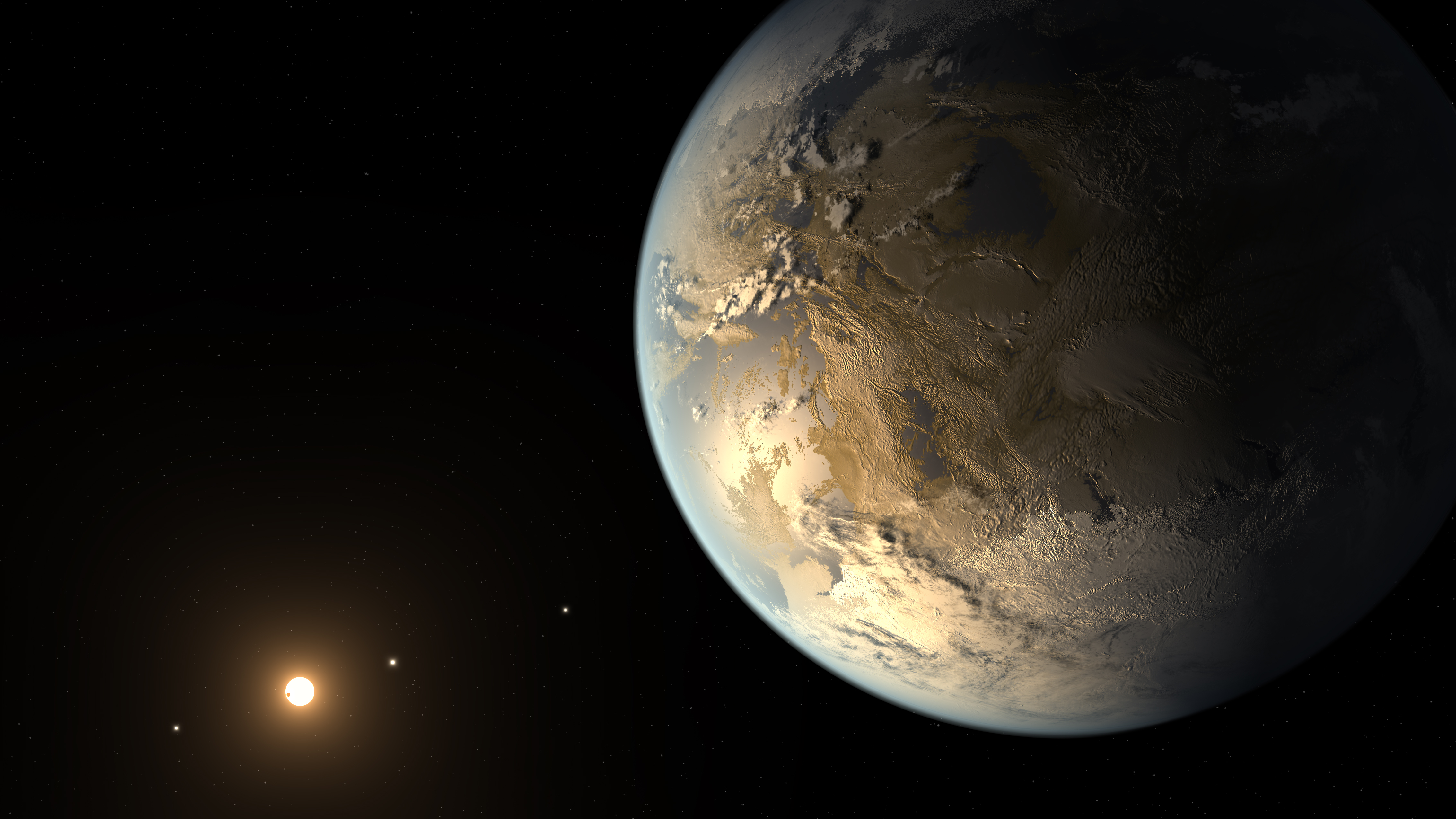1 min read
Exoplanet Kepler-186f (Illustration)

Artist's concept of Kepler-186f, the first Earth-size planet discovered in the habitable zone of its host star.
About the Object
- DistanceDistanceThe physical distance from Earth to the astronomical object. Distances within our solar system are usually measured in Astronomical Units (AU). Distances between stars are usually measured in light-years. Interstellar distances can also be measured in parsecs.500 light-years from the Earth
- DimensionsDimensionsThe physical size of the object or the apparent angle it subtends on the sky.7,454 kilometers (4,632 miles) radius
About the Data
- Data DescriptionData DescriptionProposal: A description of the observations, their scientific justification, and the links to the data available in the science archive.
Science Team: The astronomers who planned the observations and analyzed the data. "PI" refers to the Principal Investigator.
- Object NameObject NameA name or catalog number that astronomers use to identify an astronomical object.Kepler-186f
- Object DescriptionObject DescriptionThe type of astronomical object.Exoplanet orbiting red dwarf Kepler-186
- Release DateMay 24, 2018
- CreditArtwork: NASA Ames, NASA-JPL, Caltech, Tim Pyle (Caltech)
Share
Details
Last Updated
Aug 28, 2025
Contact
Media
Laura Betz
NASA’s Goddard Space Flight Center
Greenbelt, Maryland
laura.e.betz@nasa.gov
Artwork Credit
NASA Ames, NASA-JPL, Caltech, Tim Pyle (Caltech)






























